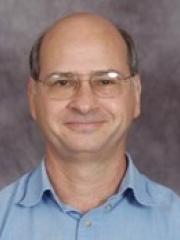
David has authored and co-authored in excess of 80 peer reviewed journal and conference papers and book chapters. He is also the lead or co-author for over 110 major consulting reports (titles available on request).
Selected Journal Papers
Romano CG, Mayer KU, Jones DR, Ellerbroek DA & Blowes DW (2002) Effectiveness of various cover scenarios on the rate of sulfide oxidation of mine tailings, Journal of Hydrology 271(1), 171–187.
Jung RF, Jones, DR & Batley, GE (2003) Corer-reactors for contaminant flux measurement in sediments, J.Environ. Qual., 32, 1905-1910.
H. Topp, H. Russell, J. Davidson, D. Jones, V. Levy, M. Gilderdale, G. Davis, R. Ring, G. Conway, P. Macintosh and L. Sertorio (2003), Process water treatment at the Ranger uranium mine, Northern Australia, Water Science & Technology, 47(10), 155–162.
van Dam RA, Humphrey CL, Harford AJ, Frostick A, Jones DR, Davies S, Storey AW (2013) Site-specific water quality guidelines:1. Derivation approaches based on physico-chemical, ecotoxicological and ecological data., Environmental Science and Pollution Research, 21, 1, pp. 118-130.
Bartolo RE, Harford AJ, Bollhöfer AF, van Dam RA, Parker SM, Breed K, Erskine WD, Humphrey CL, Jones DR (2017) Causal models for a risk-based assessment of stressor pathways for an operational uranium mine. Human and Ecological Risk Assessment, 23, 685-704.
Chen Q, Cohen DR, Andersen MS , Robertson AM , Jones DR (2022). Stability and trace element composition of natural schwertmannite precipitated from acid mine drainage, Applied Geochemistry 143 (2022), https://doi.org/10.1016/j.apgeochem.2022.105370.
Selected Conference Papers
Jones DR, Jung RF and Chapman BM (2015) Removal of metals from pH circum-neutral mine water by biologically-induced diurnal pH cycling. In Proceedings of the 10th International Conference on Acid Rock Drainage and International Mining and Water Association Annual Conference, 21–24 April 2015, Santiago, Chile, 10pp.
Jones DR, Ferguson P, and Laurencont (2017) Rehabilitation Planning at the Former Rum Jungle Mine Site in Northern Australia Part 1. Geochemical Characteristics of Mine Wastes and Inferred Post Rehabilitation Source Terms. In ‘Proceedings of the Ninth Australian Workshop on Acid and Metalliferous Drainage, Burnie, Tasmania. 20-23 November 2017. (Eds. Bell, L.C., Edraki, M. and Gerbo C.) pp. 271-279 (The University of Queensland: Brisbane).
Cohen DR, Chen Q, Andersen MS, Robertson AM, Jones DR, and Kelly B (2017) Chemical and economic feasibility study of alkaline CSG waters in AMD Remediation. In ‘Proceedings of the Ninth Australian Workshop on Acid and Metalliferous Drainage, Burnie, Tasmania. 20-23 November 2017. (Eds. Bell, L.C., Edraki, M. and Gerbo C.) pp. 231-238 (The University of Queensland: Brisbane).
Ferguson P, Jones DR, Skoglund J, and Tebaibi Z (2022) Pit Backfilling with Waste Rock at the closed Bouchard Hébert Mine, Rouyn-Noranda (Québec), Canada In Edraki, M, Jones, D., and Jain, K.R. (eds) Proceedings of the Twelfth International Conference on Acid Rock Drainage, online. 18-24 September 2022. pp. 656-667 (The University of Queensland: Brisbane).
Leading Practice Guidance
Jones DR et al (2016) Leading Practice Sustainable Development in Mining Handbook on Acid and Metalliferous Drainage, 2016, 212pp. https://industry.gov.au/resource/Programs/LPSD/Pages/LPSDhandbooks.aspx#.
